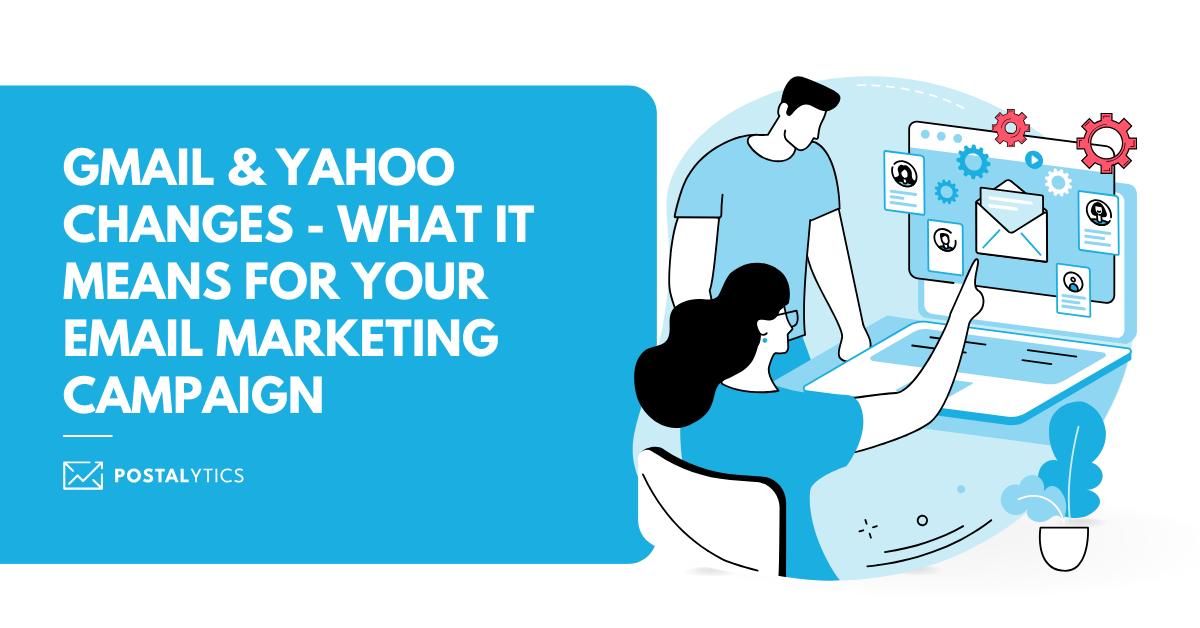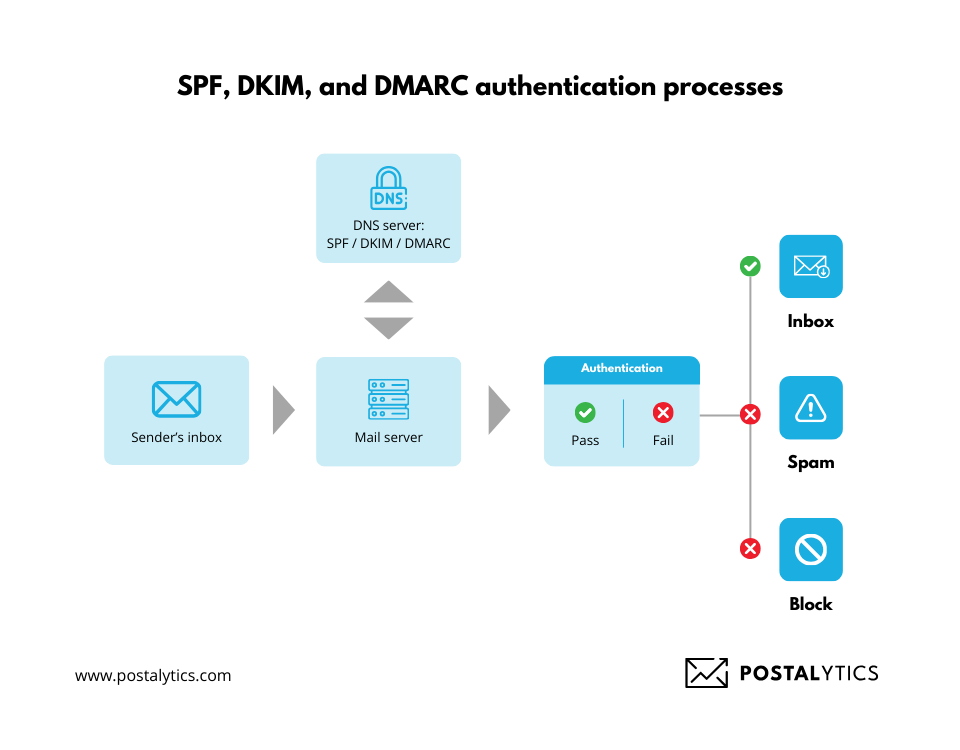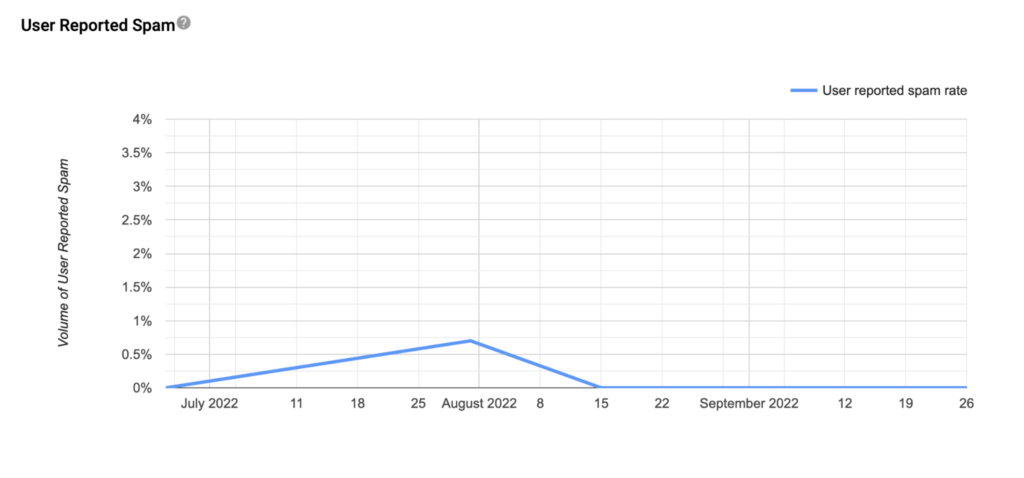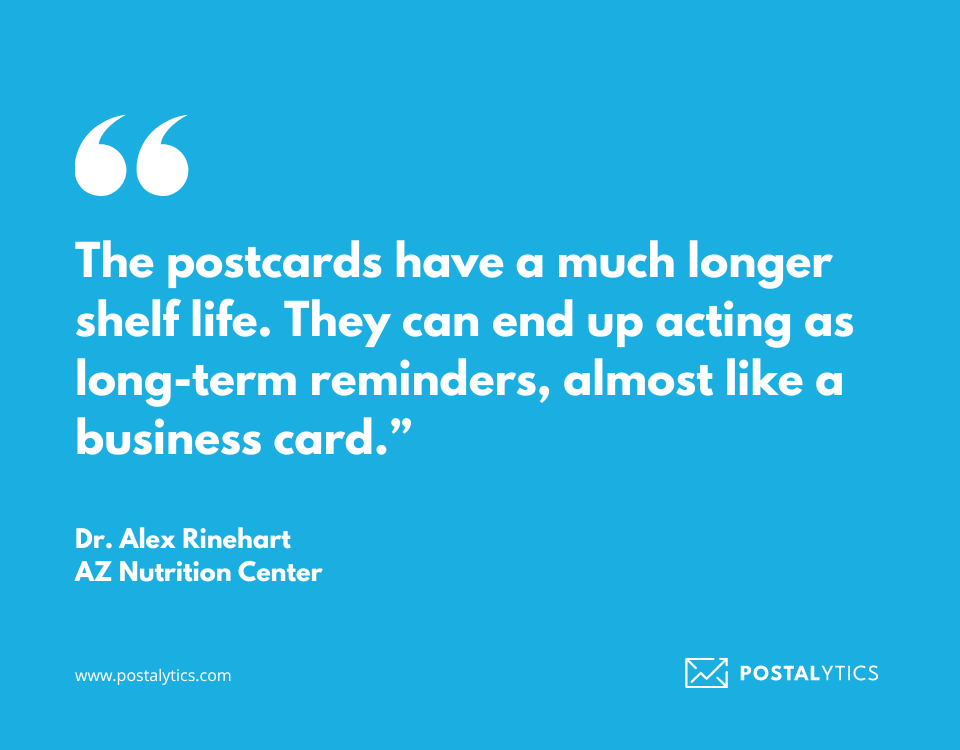
Much of your email marketing campaign’s success relies on whether the email gets delivered to the recipient’s inbox or goes straight to the spam folder.
With Google and Yahoo turning email best practices into mandatory requirements, there’s a big question mark on how to ensure your emails get delivered.
Whether it is authenticating your email or looking for different ways to reach your audience, like direct mail marketing, we need to understand the impact of these rules and how we can prepare for them.
Let’s get started.
Table of contents
Understanding the New Google and Yahoo Email Changes
To secure inboxes, Google and Yahoo have said they will enforce new protection rules for bulk email senders.
Gmail has announced that the rules will start applying in February 2024. In a similar statement by Yahoo, they mention that they will start a similar drive in Q1 of 2024.
So, what are these rules? Let’s have a look at them.
- Email authentication: To have confidence in an email’s source, these mailbox providers now require senders to implement strong email authentication adhering to industry standards like DKIM, SPF, and DMARC.
- Providing easy unsubscribes: This rule denotes senders to provide an unsubscribe option to their recipients that can be activated with one click. Moreover, these requests should be processed within two days.
- Avoid sending unwanted emails: While Gmail and Yahoo have monitored reported spam rates, they will now set a threshold spam complaint rate to ensure people’s inboxes are not cluttered with unsolicited or irrelevant emails.

While these are the general rules, Google has also created a detailed guide that mentions a lot of other rules, such as message formatting rules, recommended sending practices and volume requirements.
Why are These Changes Happening to Email Marketing?
In 2022, nearly 49% of all emails were identified as spam. With scammers trying to imitate organizations, extracting personal and financial information, and targeting holidays and events to create and extract money using shady links and attachments, providers like Gmail and Yahoo needed to take steps to make email safer.
Neil Kumaran, Group Product Manager of Google, describes this exact situation –
“Gmail’s AI-powered defenses stop more than 99.9% of spam, phishing and malware from reaching inboxes and block nearly 15 billion unwanted emails every day. But now, nearly 20 years after Gmail launched, the threats we face are more complex and pressing than ever.”
Through these rules, Google and Yahoo have joined hands to protect innocent people from falling prey to scams and phishing attacks.
It’s also a step towards ensuring companies don’t create irrelevant email lists and send marketing material to people who don’t want to be included.
How Will These Changes Impact Your Email Marketing Campaigns?
We have seen many marketers think these rules don’t apply to them as they don’t cross the limit of 5000 emails per day. But what has started on a small scale will surely grow, and hoping that the authorities won’t look at you because you’re a small fish isn’t a wise decision. If your emails get lower response and read rates, they might be landing in your recipient’s junk folder or, worse yet, not getting delivered.
It’s also important to note that Google has specified that if you’re considered a bulk sender once, that title will apply to you permanently, even if you start sending campaigns with fewer than 5000 recipients.
All of this means marketers will have to pay attention to the finer details of email marketing and follow some best practices:
- Sourcing email addresses for lists with permission
- Not mixing different types of messages in the same content
- Avoiding opt-in forms that are checked by default and automatically subscribing users
- Avoiding large spikes in volume with your holiday marketing campaigns
- Paying more attention to selecting the lists for each campaign
How to Prepare for the Google and Yahoo Changes?
You can no longer stick to your earlier ways of working when it comes to email marketing. There are a lot of different things you’ll have to adhere to and bring a change in your workflows.
Here are five steps we recommend.
1. Build Trust With a Verified Domain
Using your own domains is no longer a luxury. It has become an unsaid pre-requisite for ensuring your emails don’t land in the spam folder. Free email domains like “@gmail.com” or “@yahoo.com” can derail your open rates and impact your recipient’s experience with the brand.
In a study by GetResponse, it was found that emails sent from a company’s own domain had an average open rate of 41.76% as opposed to 32.32% from emails sent from a free domain.
You can either purchase a branded domain name from companies such as GoDaddy or select email providers such as Microsoft 365 or Google Workspace.
2. Authenticate Your Emails
This domain authentication step is necessary for recipients to trust that the received email is from a genuine brand/person. Authentication prevents phishing attacks and other scams that could erode trust in your brand.

This is why Google and Yahoo have made it mandatory for senders to follow email authentication best practices for their domains. These include establishing
- Strong authentication with SPF (Sender Policy Framework)
- DKIM (Domain Keys Identified Mail)
- DMARC (Domain-based Message Authentication, Reporting, and Conformance) for your domain.

If you’re a bulk sender, setting up all three authentications is recommended to ensure deliverability and protect your sender identity.To learn more about how to move forward with these authentication measures, here’s a guide you can follow.
3. Add One-Click Unsubscribe
Some marketers try to hide the unsubscribe links by putting them in hidden places or changing the hyperlink color/size. Worse yet, some take you to a different landing page where they make you fill out a form to unsubscribe.
To remove these troubles, Gmail and Yahoo require bulk senders to give subscribers the option of unsubscribing with a single click from directly within the campaigns. This means removing steps such as changing subscription preferences, confirming email, etc. You’ll also have to ensure these requests are processed within two days.

If you’re using email marketing tools, some already provide the option to use one-click unsubscribe links. Otherwise, you’ll have to follow the guidelines given by Gmail and Yahoo to set this up.
4. Monitor and Control Spam Rates
Spam rate shows the percentage of emails reported as spam by email recipients. Both Google and Yahoo have declared a spam rate threshold of 0.3% that you should not cross. While Yahoo makes this easy by providing a complaint feedback loop, to track your spam rate on Gmail, you’ll have to use Google Postmasters Tools.

If you have a high spam rate, look into the reasons. Some reasons could be wrong targeting, uninvited subscribers, content not meeting the standard, not having an unsubscribe link, no consistency in your campaigns, etc.
It’s always a good practice to keep your spam rate in control rather than take measures for not meeting Gmail and Yahoo’s guidelines.
5. Focus on Other Marketing Channels
Email marketing will only get more difficult in the long run. Instead of putting all your eggs in one basket, it’s time to diversify and adopt other marketing channels. One such channel you can experiment with is direct mail marketing.
With direct mail having a higher open rate of 80-90% as opposed to email’s 20-30%, you can be assured that your mail reaches the recipient’s inbox. The best part? People like receiving direct mail more than receiving an email.
You can capitalize on these elements and supplement your email marketing efforts with direct marketing. Many of Postalytics’ clients have done the same and garnered great results.
Why is it Critical to Adopt Direct Mail Marketing?
Avenues like direct marketing help you reach customers with a more personalized and targeted approach without fearing your mail lands in the spam folder. The best part is designing a postcard or a catalog has become as easy as designing an email.
With tools like Postalytics, you can create, schedule, and send direct mail from the platform itself. This reduces your turnaround time and gets you results as quickly as email campaigns.

It also gives you a competitive advantage as people receive far fewer direct mails than emails.
Dr. Alex Rinehart, who operates AZ Nutrition Center, faced a similar challenge of their emails not reaching customers. This single-channel communication approach was causing him to lose contact with a significant portion of his customer base.
While he was wary of putting a lot of resources and money into direct marketing, he chose Postalytics.
The result? He set up automated workflows to trigger postcards to email non-responders, resulting in an average ROI increase of 30%.
In his words, “With direct mail, fewer clients fall through the cracks of our communication, and they see better results from their nutrition strategies. Foremost, we are able to create long-term, trusted relationships that otherwise would be lost due to thinning online attention spans.”

Get started with your free account of Postalytics and get similar benefits from your direct campaigns.
Frequently Asked Questions
- When will these email deliverability requirements from Google and Yahoo go into effect?
These rules have already been pushed into effect as of this February; as for the one-click unsubscribe rule, both providers have given the senders until June 1, 2024.
- What happens if I send mail that doesn’t meet these requirements?
Failure to comply with these requirements will lead to high bounce rates, email communications going to junk folders, delayed email deliveries, a drop in email performance like opens and clicks, and decreased sender reputation.
- Is sending volume a criterion for these requirements?
While these rules have been strictly enforced for senders who send more than 5000 emails per day, Gmail and Yahoo will keep an eye on all senders. Thus, it’s best if everyone follows these rules.
- Will I see a drop in deliverability?
It’s possible that when you add a verified sending domain, you may see a drop in engagement metrics. Therefore, you must focus on keeping your email lists clean and improving your domain reputation.
About the Author

Dennis Kelly
Dennis Kelly is CEO and co-founder of Postalytics. Dennis joined Boingnet, the predecessor to Postalytics, in 2013. Boingnet was focused on providing print and direct mail marketing service providers the ability to add digital marketing channels to their direct mail campaigns. Postalytics is Dennis’ 6th startup. He has been involved in starting and growing early-stage technology ventures for over 30 years and has held senior management roles at a diverse set of large technology firms including Computer Associates, Palm Inc. and Achieve Healthcare Information Systems.
